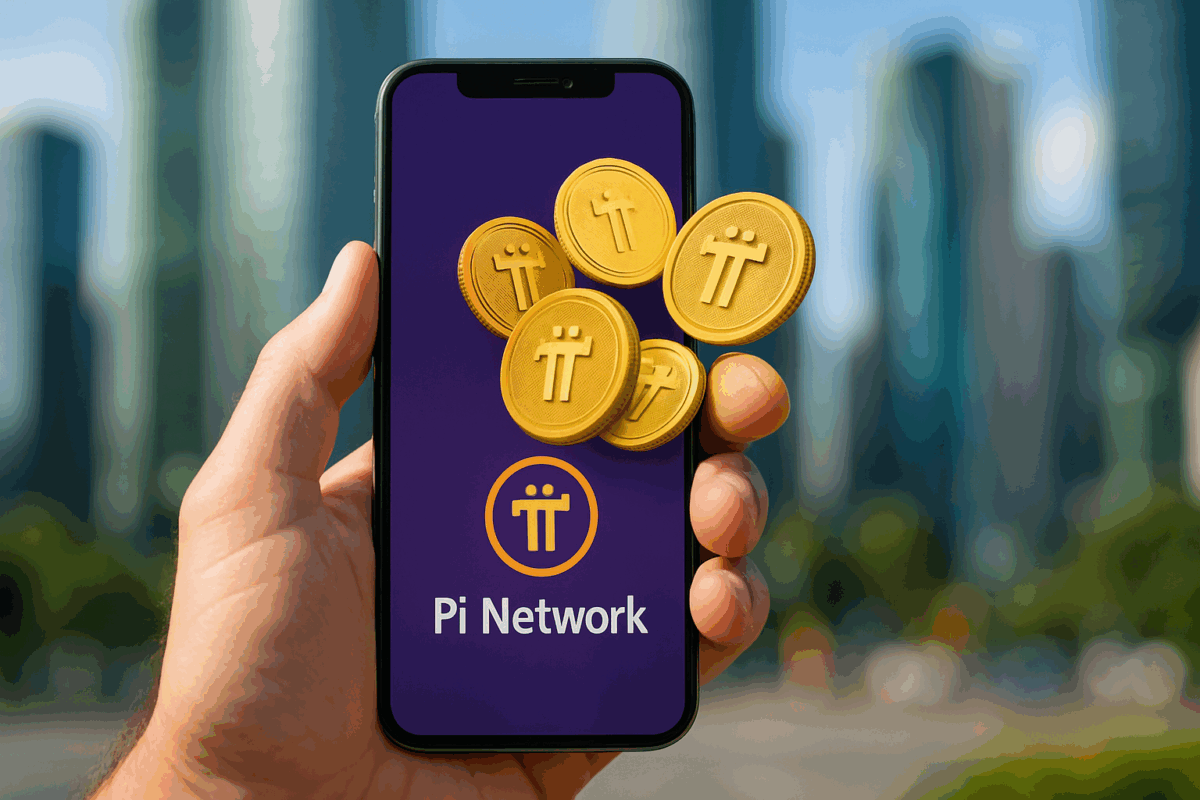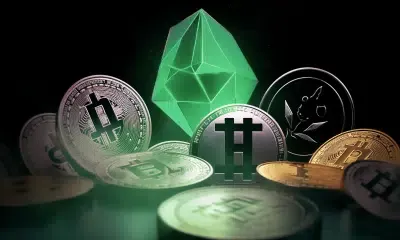
People worldwide are talking about Pi Network, a crypto project designed for your phone, which hopes to put digital money in everyone’s hands. What’s different is you can “dig up” Pi coins using your smartphone without it killing your battery, and this idea has attracted somewhere between 55 and 60 million folks, called “Pioneers.” With Pi Network shifting to its Open Mainnet on February 20, 2025 – meaning people can now trade Pi outside the network and it might show up on crypto exchanges – a big question keeps popping up: Is $100 a realistic price for Pi Coin?
Getting Pi Network to where it is today happened in stages. It kicked off with a beta version back in March 2019, then moved to a Testnet, and later, in December 2021, an Enclosed Mainnet. This enclosed system let people get their identities verified (KYC) and move their Pi coins to the actual mainnet, though it couldn’t yet connect to the outside world. When February 2025 rolled around, the full Open Mainnet went live, tearing down the barriers so Pi Coin could finally be bought and sold on open markets and link up with other blockchains.
By May 2025, you could find Pi Coin on exchanges such as OKX, Bitget, MEXC, and Gate.io, but the big players like Binance or Coinbase hadn’t added it yet. Talk of a Binance listing started bubbling up after some test payments involving a Binance wallet were spotted, and the Pi Core Team hinted at big news for May 14, 2025, right when founder Dr. Nicolas Kokkalis was set to talk at the Consensus 2025 event.
Since the Open Mainnet started, Pi Coin’s price has been on a rollercoaster; it jumped up at first, with some chatter about it hitting almost $3, then it tumbled quite a bit. In early to mid-May 2025, the coin’s value bounced around, with different people reporting it anywhere from $0.58 to $1.50. Around 7.08 billion PI coins are thought to be out there for trading, out of a hard limit of 100 billion ever. Lately, whispers (not yet confirmed) suggest a lot more coins might be entering circulation, maybe to get ready for more exchange listings or to supply trading pools, but official word is still pending on that.
The $100 Pi Coin dream
If Pi Coin ever hits that $100 mark, a lot of things inside the Pi Network itself need to click into place. First off, it’s not just about having tons of users; what really counts is how many have actually gone through identity checks (KYC) and moved their Pi to the Mainnet. Early in 2025, word was that 12 to 18 million Pioneers had done their KYC, and between 8 and 10.14 million of them had their coins on the Mainnet. People need to do more than just tap a button on their phones; they need to actually use Pi apps and get involved in what the network offers.
Then there’s the whole point of using Pi for real things. The network needs a bunch of useful decentralized apps (dApps) so people can spend Pi on actual stuff, services, or whatever else. Pi Network is trying to make this happen with its tools for developers and the Pi Browser, and supposedly over 100 dApps are good to go on the Mainnet. Things like PiFest, which encourages local shops to take Pi, are a good start.
The Open Mainnet itself has to be rock-solid: secure, able to grow, and dependable enough for loads of transactions and all those dApps. Pi Network uses something called the Stellar Consensus Protocol (SCP) to keep things running.
Finally, how the coins themselves are handled matters a lot. There are 100 billion Pi tokens in total, and 65% of those are set aside for people who “mine.” This supply needs careful handling. They’ve also got ways for users to lock up their Pi if they want, hoping this will keep the price steadier and encourage people to stick around. Getting Pi onto the big-name exchanges is also a must-have for people to easily buy and sell, and for everyone to agree on what it’s worth.
What happens inside Pi Network isn’t the whole story; outside forces will also play a big part in where Pi Coin’s price goes. The general mood in the crypto world is a big one: if most coins are going up, that usually helps coins like Pi, but if the market’s down, it can drag Pi down too. Government rules about crypto are another major thing. If big countries make clear, helpful rules, more people might feel safe investing and using Pi. But if governments clamp down, that’s bad news.
Getting onto the really big exchanges, like Binance and Coinbase, is something many believe would be a game-changer, making Pi easier to get, trade, and trust. People voting on Binance have already shown they want Pi there. And don’t forget the “Pioneers” themselves – having a huge, enthusiastic community is a plus. The challenge is getting all those people to actually use Pi for everyday purchases.
Ask different experts about Pi Coin’s future price, and you’ll get wildly different answers. Some are playing it safe with their short-term guesses, while others are much more optimistic for the long haul, even throwing out numbers like $100 or more by 2030, if tons of people start using it for real things. But right now, with the project still pretty new to the open market, these are just educated guesses at best.
One really debated idea is the “Global Consensus Value” or GCV, where some in the community claim each Pi coin is worth $314,159 – a number they picked because it looks like the math number Pi. Most people who know finance and crypto think this GCV is pie-in-the-sky stuff, not grounded in how economies actually work, because it would make Pi Network worth more than everything in the world combined. The official Pi Core Team hasn’t backed this GCV number.
But it’s not all smooth sailing for Pi Network on the way to a possible $100 price; there are definite hurdles and criticisms. Some doubters say Pi Coin’s price is mostly guesswork right now because there aren’t many actual ways to use it yet, and the app world around it isn’t fully built. With so many coins planned, some also worry about its value dropping over time.
People have also pointed fingers at how much control the Pi Core Team still has over the network and a big chunk of the coins, even though the goal is for it to be decentralized. The team has also been dinged for not sharing enough technical details or being clear about how things are run.
Because you get rewards for bringing new people in, some have called it a pyramid scheme or like multi-level marketing, though the Pi team says it’s not.
Getting through the identity verification (KYC) has been slow for some, and others worry about what happens to their personal info.
The crypto world is packed with competitors, and if one group holds too many Pi coins, they could try to mess with the price. And now that the Mainnet is open, there’s a chance many early “miners” will want to sell their coins and cash out, which could push the price down, especially at first.
For Pi Network to last, it really needs its Open Mainnet to work well and have a lively scene of apps that people actually use. The plan is to eventually let the community have a big say in how things are run, moving away from the “Semi-DAO” setup they have now. They absolutely have to keep coming up with new ideas, build out the app world, and make Pi Coin genuinely useful for something. The Pi Core Team keeps saying they want to grow a real economy around Pi, built on trust and actual transactions. Everyone’s also waiting for them to put out a new plan showing what’s next and when things will happen.
Is $100 a realistic price for Pi Coin?
So, could Pi Coin really get to $100? Right now, that’s a big maybe. Pi Network has certainly signed up a ton of users and its Open Mainnet is live, but getting to that kind of price tag is a tough climb with many obstacles.
What will really decide its future price? Things like people actually using it in a healthy app environment, getting it on big, trusted crypto exchanges, proving the network and its management are truly spread out, a good vibe in the overall crypto market, and helpful government rules. A lot also depends on whether the Pi Core Team can handle the critiques, be open about what they’re doing, and make their big ideas happen.
Even though the “Pioneer” community is optimistic and the project keeps moving forward, anyone thinking about Pi and that $100 target should be pretty careful, remembering all the risks and how new Pi Coin still is to the open trading world. What we hear after the Consensus 2025 conference might tell us more about where Pi Network is headed.




